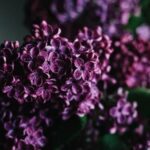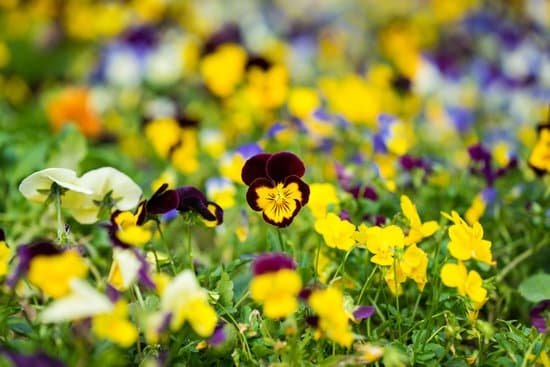Indoor home gardening has become a popular trend among plant enthusiasts looking to bring the beauty of nature into their homes. With limited outdoor space and unpredictable weather conditions, indoor gardening provides a convenient and sustainable way to cultivate your own mini oasis inside your living space. Whether you have a green thumb or are just starting out, there are endless possibilities and benefits to exploring indoor garden ideas.
One of the main reasons why more people are opting for indoor gardening is the ease of access and convenience it offers. You can create a lush garden right in your own living room, kitchen, or even bathroom, transforming any space into a vibrant sanctuary. From herbs and flowers to succulents and vegetables, the options for indoor plants are diverse and can cater to any personal style or preference.
In addition to adding a touch of natural beauty to your home decor, indoor gardens also come with a range of health benefits. Plants help purify the air by removing toxins, reduce stress levels, and boost overall well-being.
Furthermore, indoor gardening promotes sustainability as it encourages individuals to be more self-sufficient by growing their own produce at home. As we delve into this article on indoor home gardening, we will explore the various benefits, essential tools, plant choices, creative ideas, maintenance tips, design inspirations, and success stories that will inspire you to embark on your own indoor gardening journey today.
Benefits of Indoor Gardening
Indoor gardening offers a multitude of benefits that go beyond just adding a touch of greenery to your living space. One of the primary advantages of bringing the garden indoors is the positive impact it can have on your health.
Indoor plants are known to purify the air by absorbing toxins and releasing oxygen, creating a healthier environment for you and your family. In addition, caring for plants has been shown to reduce stress levels and improve overall mental well-being, making indoor gardening a therapeutic activity.
Aside from the health benefits, indoor gardening also enhances the aesthetics of any room. Whether you opt for lush green foliage or colorful blooming flowers, plants can instantly brighten up a space and add a natural touch to your home decor.
The versatility of indoor plants allows you to personalize your indoor garden to match your style and create a calming atmosphere in any room. From modern minimalist succulents to bohemian hanging planters, there are endless ways to incorporate indoor plants into your home design.
Furthermore, indoor gardening promotes sustainability by reducing your carbon footprint. By cultivating your own herbs, fruits, or vegetables indoors, you can decrease reliance on store-bought produce that may have been transported long distances. Growing your own food also allows you to control the use of pesticides and chemicals, leading to healthier and more environmentally friendly options for consumption. Embracing indoor gardening not only benefits you but also contributes positively to the planet’s well-being through sustainable practices.
- Improved air quality
- Reduced stress levels
- Enhanced home decor
- Promotes sustainability
Essential Tools and Supplies for Indoor Home Gardening
Indoor home gardening is a delightful and rewarding activity that allows you to bring the beauty of nature inside your home. To ensure a successful indoor garden, it is essential to have the right tools and supplies at your disposal.
One of the most important tools for indoor gardening is a watering can with a narrow spout, which helps control the flow of water and prevent overwatering. Additionally, having a set of small hand tools such as pruning shears, scissors, and a trowel will make maintenance tasks easier.
Another crucial supply for indoor home gardening is good quality potting mix or soil. Look for a well-draining mix specifically designed for indoor plants to avoid issues like root rot. Indoor plants also benefit from regular feeding, so investing in a balanced liquid fertilizer suitable for houseplants is recommended. Furthermore, having planters or pots with drainage holes is important to prevent waterlogging and promote healthy root growth.
Creating an optimal environment for your indoor garden involves ensuring adequate lighting. A grow light can be beneficial, especially if your home lacks natural sunlight or if you are growing plants that require more intense light. Having a humidifier can also be advantageous, as many houseplants thrive in environments with higher humidity levels. By equipping yourself with these essential tools and supplies, you will be better equipped to nurture a thriving indoor garden.
| Essential Tools | Supplies |
|---|---|
| Watering can with narrow spout | Potting mix or soil |
| Small hand tools (pruning shears, scissors, trowel) | Balanced liquid fertilizer |
| Grow light (optional) | Planters or pots with drainage holes |
Indoor gardening opens up numerous opportunities to cultivate various plants within the comfort of your own home. With the right tools and supplies on hand, you can create an inviting sanctuary filled with lush greenery and vibrant blooms year-round. Remember that proper care and maintenance are key to the success of your indoor garden, so investing in these essential items will set you on the path to becoming a successful indoor gardener.
Moreover, having the necessary tools and supplies not only aids in the growth of your plants but also enhances your overall experience as an indoor gardener. Take the time to research specific requirements for different types of plants you wish to grow indoors and tailor your supplies accordingly. Whether you are just starting out or already have some experience in indoor gardening, having these essentials at your disposal will make caring for your plants easier and more enjoyable.
Choosing the Right Plants for Your Indoor Garden
When it comes to indoor home gardening, choosing the right plants for your space is crucial to ensure they thrive and grow successfully. One key factor to consider when selecting plants is the amount of light your indoor garden receives. Whether you have a room with plenty of natural sunlight or a dimly lit area, there are plant options for every lighting situation.
For low light conditions, consider incorporating plants that can thrive with minimal sunlight. Some popular low light options include:
- Snake Plant: Known for its air-purifying qualities and easy-care nature
- Pothos: A vine plant that can tolerate low light and adds a touch of greenery
- Spider Plant: Perfect for hanging baskets and can adapt well to various light conditions
On the other hand, if your indoor garden receives ample sunlight, you have a wider range of plant choices that require bright light to flourish. Some great options for bright light conditions include:
- Succulents: Drought-resistant plants that thrive in sunny spots
- Aloe Vera: A versatile plant known for its medicinal properties and sun-loving nature
- Jade Plant: A beautiful and resilient option that enjoys direct sunlight
By understanding the lighting needs of different plants, you can create a thriving indoor garden that suits your space and brings beauty and greenery into your home. Whether you opt for low light varieties or bright light favorites, there are plenty of options to choose from to enhance your indoor gardening experience.
Creative Indoor Garden Ideas
Indoor gardening offers a plethora of creative possibilities beyond the traditional potted plants on window sills. Whether you have a small apartment or a spacious home, there are numerous innovative ideas to bring your indoor garden to life. From hanging gardens to vertical gardens and terrariums, these concepts can add a touch of nature to any indoor space.
Hanging Gardens
Hanging gardens are an excellent way to utilize vertical space in your home while adding visual interest. You can create a stunning display by hanging plants in decorative containers from the ceiling or walls. Options range from cascading vines like pothos or spider plants to colorful flowering varieties such as begonias or kalanchoes. Consider using macrame plant hangers or decorative hooks to elevate the aesthetic appeal of your hanging garden.
Vertical Gardens
Vertical gardens are perfect for those who want to maximize their indoor garden space without sacrificing floor space. These gardens can be created using wall-mounted planters, vertical shelving units, or even repurposed pallets. Planting a variety of herbs, succulents, ferns, and trailing plants can create a lush green oasis on any blank wall in your home. Vertical gardens not only look stylish but also help improve air quality by increasing oxygen levels inside your living spaces.
Terrariums
Terrariums are self-contained ecosystems that add a touch of whimsy and charm to any indoor setting. These miniature gardens housed in glass containers require minimal maintenance and are perfect for those with limited time or space for traditional gardening.
Succulents, air plants, mosses, and small ferns thrive in terrarium environments and can be arranged creatively to suit your personal style. Consider incorporating decorative elements like colorful stones, driftwood pieces, or miniature figurines to enhance the visual appeal of your terrarium garden.
Indoor Garden Maintenance
Indoor gardening is a rewarding and therapeutic activity that can bring nature right into your home. With the right tools, supplies, and care, you can create a beautiful indoor garden oasis that not only enhances the aesthetics of your living space but also contributes to your overall well-being. When it comes to indoor garden maintenance, three key aspects to focus on are watering, fertilizing, and pest control.
Proper watering is essential for the health of your indoor plants. Overwatering can lead to root rot and other issues, while underwatering can cause wilting and stunted growth. The key is to find the right balance based on the type of plants you are growing and their specific water needs. Consider using a watering schedule or investing in self-watering pots to help maintain consistent moisture levels.
Fertilizing is another important aspect of indoor garden maintenance. Indoor plants may not have access to nutrients naturally found in outdoor soil, so regular fertilization is crucial for their growth and vitality. Choose a fertilizer that is specifically formulated for indoor plants and follow the instructions carefully to avoid over-fertilizing, which can be harmful. Additionally, consider using organic fertilizers for a more sustainable and eco-friendly approach to plant care.
| Aspect | Recommendation |
|---|---|
| Watering | Find the right balance based on plant needs; consider using a watering schedule or self-watering pots |
| Fertilizing | Choose a fertilizer specifically formulated for indoor plants; follow instructions carefully; consider organic options |
| Pest Control | Monitor plants regularly for pests; introduce natural predators like ladybugs; use neem oil or insecticidal soap as needed |
How to Design a Stylish Indoor Garden Space
Designing a stylish indoor garden space can elevate the ambiance of any home, whether it’s a small apartment or a large house. The key is to maximize the available space and incorporate elements that reflect your personal style.
For those living in small apartments, vertical gardens are a great option to utilize wall space and add greenery without taking up valuable floor space. Consider installing wall-mounted shelves or hanging planters to create a vertical garden that not only looks beautiful but also saves space.
Utilize Natural Light and Artificial Lighting
In small apartments where natural light may be limited, place your indoor garden near windows to take advantage of any sunlight that filters through. Choose plants that thrive in low light conditions such as pothos, snake plants, or peace lilies. Additionally, consider incorporating artificial lighting options like grow lights to supplement natural light and ensure your plants receive adequate light for growth.
Add Creative Plant Displays
For larger homes with more space to play with, get creative with plant displays by incorporating different sizes and textures of plants. Consider creating a focal point with a large statement plant such as a fiddle leaf fig or monstera. Mix in smaller plants like succulents or air plants in unique containers like terrariums or glass jars for an added visual interest. Experiment with grouping plants together in clusters or creating asymmetrical arrangements for a visually dynamic indoor garden space.
Whether you have a small apartment or a large home, designing a stylish indoor garden space is all about finding the right balance between aesthetics and functionality. By utilizing natural light, incorporating creative plant displays, and customizing your indoor garden to suit your personal style, you can create a beautiful oasis within your home that brings joy and tranquility. Start exploring various indoor garden ideas today to transform your living space into a green paradise.
Success Stories
Indoor home gardening has become increasingly popular as more people realize the benefits of bringing greenery indoors. From adding a touch of nature to your living space to cultivating your own fresh herbs and vegetables, indoor gardening offers a myriad of rewards. One of the key aspects that make indoor gardening appealing is the ability to create a beautiful oasis within the confines of your home, no matter how small or large your space may be.
Many individuals have embraced indoor gardening and transformed their living spaces into stunning showcases of plant life. One inspiring success story is that of Sarah, a city dweller with limited outdoor space who turned her apartment balcony into a thriving urban jungle using creative hanging garden ideas.
By utilizing vertical planters and cascading vines, Sarah created a lush outdoor retreat right in the heart of the city. Her dedication to nurturing her plants not only beautified her home but also brought a sense of tranquility and connection to nature into her urban lifestyle.
Another success story comes from Mark, an avid home gardener who took his passion for plants indoors during the winter months by setting up a unique terrarium garden. This mini ecosystem housed a variety of succulents and air plants, creating a captivating display that added life and color to his living room.
Mark’s terrarium garden not only served as a decorative focal point but also became a conversation starter among guests who marveled at his green thumb skills. These success stories serve as testaments to the endless possibilities and creativity that can be achieved through indoor gardening, inspiring others to embark on their own journey towards creating beautiful indoor gardens.
Conclusion
Indoor home gardening offers a plethora of benefits that go beyond just adding a touch of green to your living space. The act of nurturing plants indoors can have a positive impact on your health, well-being, and the environment. By incorporating indoor garden ideas into your home, you not only create a visually appealing space but also contribute to sustainability by growing your own herbs, flowers, or even fruits and vegetables.
When starting your indoor garden, it is essential to invest in the right tools and supplies to ensure the success of your plants. From proper lighting to suitable containers and soil mixtures, having the correct equipment will set you on the path to becoming a successful indoor gardener.
Whether you opt for low-light plants like pothos and snake plants or decide to grow herbs in a sunny kitchen window, there are endless possibilities for creating an indoor oasis that suits your space and lifestyle.
As you embark on your indoor gardening journey, keep in mind that maintenance is key to thriving plants. Regular watering, fertilizing as needed, and keeping pests at bay are all crucial aspects of caring for your indoor garden. Additionally, don’t be afraid to get creative with your plant displays by exploring hanging gardens, vertical gardens, or elegant terrariums.
With some careful planning and attention to detail, you can design a stylish indoor garden space that enhances both your home decor and overall well-being. So why wait? Start your own indoor garden today and reap the rewards of bringing nature indoors.

Welcome to my gardening blog! I am passionate about plants and enjoy sharing my knowledge and experiences with others. In this blog, I will write about everything related to gardening, from tips on how to get started to updates on my own garden projects.





